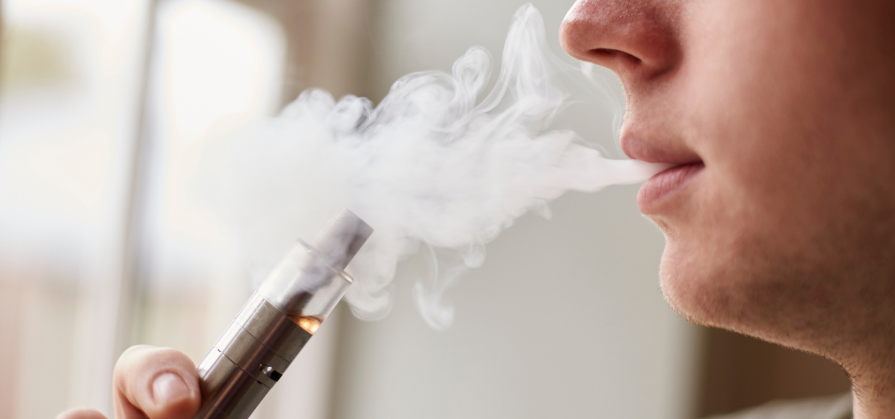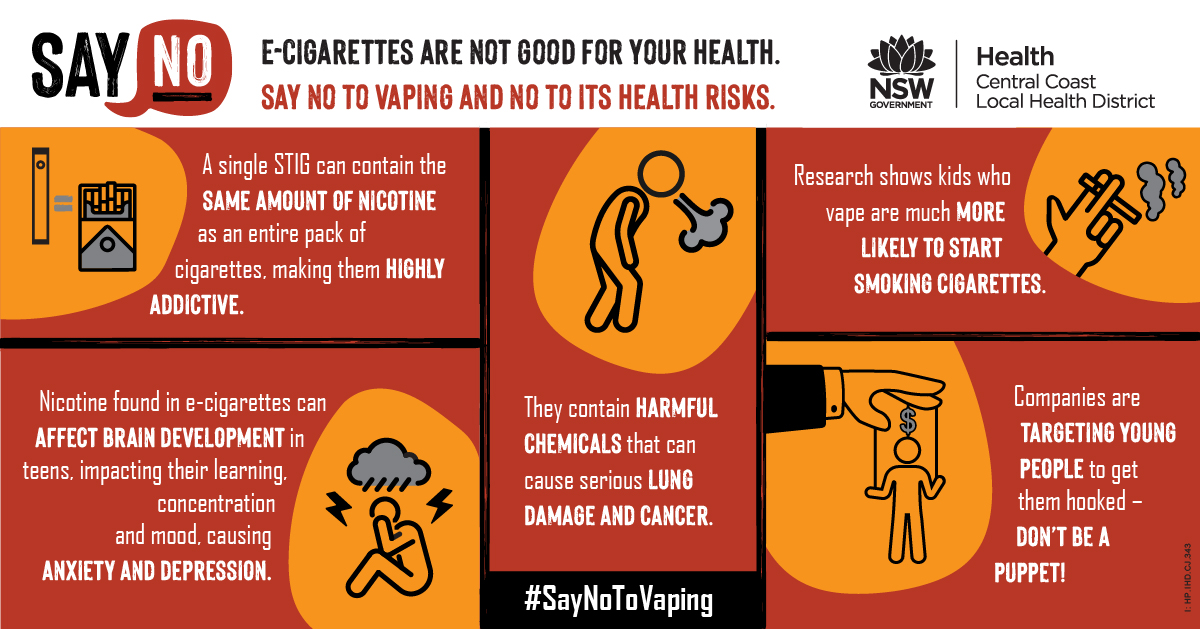CCGS joins 'Say no to Vaping' campaign

Central Coast Grammar School has joined with schools across the Coast to support Central Coast Local Health District's Say No to Vaping campaign.
The campaign was launched to coincide with World No Tobacco Day (Monday 31 May) and highlights how electronic cigarettes (e-cigarettes) are not only addictive, but contain harmful chemicals and toxins that can cause some of the same serious health problems as smoking tobacco.
Data on teenage vaping in 2017 indicated one in five students aged 16 to 17 years old had used an e-cigarette, while nearly one in 10 students aged 12 to 15 had used one.
There are fears this number is growing though, and Dr Lyndon Bauer, a local GP and health promotion officer at Central Coast Local Health District, hopes the campaign will help debunk some of the myths around vaping.
“We know from engaging regularly with Central Coast high schools and community groups that vaping is a rapidly emerging issue for them,” Dr Bauer said.
“Part of this problem stems from a number of myths around e-cigarettes that they’re harmless and less addictive. This is simply not true – many e-cigarettes contain or produce vapour containing chemicals and toxins such as formaldehyde and heavy metals that can cause serious lung damage and even cancer.
“They can also contain large amounts of nicotine, the same highly-addictive chemical that’s in regular cigarettes. What’s more, they’re known to cause physical harm too; there are now thousands of cases of people being injured by faulty e-cigarette batteries exploding.

“That’s why we’re working with our local schools and community organisations to encourage youngsters not to be fooled into thinking this is some kind of harmless form of smoking.”E-cigarettes are battery-powered and can look like everyday items like pens, highlighters, asthma pumps, lipsticks or USB memory sticks, as well as traditional cigarettes, cigars or pipes. They have cartridges filled with a liquid that typically contains nicotine, flavourings and other chemicals. This liquid is heated by the battery, producing a vapour that the user inhales, hence the term “vaping”.
A single STIG or Cuvie, which are two of the more popular e-cigarette devices amongst teens in Australia, can contain the same amount of nicotine as an entire packet of cigarettes, and Dr Bauer is concerned about the short- and long-term health effects this can have on a young person.
“Because of their sweet flavours, e-cigarettes make it easy for teens to put large amounts of nicotine into their body without even realising it,” Dr Bauer said.
“This is not good for a young person. Nicotine can affect brain development in teens, impacting their learning, concentration and mood, causing anxiety and depression.
“Putting nicotine into your body also increases your risk of other types of addiction in later life. In fact, studies in a number of countries have shown young people who use e-cigarettes are much more likely to go on to start smoking regular cigarettes, becoming what is known as ‘dual users’.
“Even if the e-cigarette doesn’t contain nicotine, vaping still familiarises youngsters with some of the other behaviours of smoking tobacco, such as inhaling smoke and even simply the feeling of having a cigarette in your hand all the time.
“It’s really important that, through the Say No to Vaping campaign, we help students understand just how harmful e-cigarettes can be.”
In NSW, it is illegal to sell e-cigarettes or e-cigarette accessories to a person under 18 years of age, while it is illegal to sell e-cigarettes containing nicotine to all ages. It is also illegal to use e-cigarettes in places where smoking is illegal, such as outdoor play areas, public swimming pools, public transport and outdoor dining areas.
From October 2021, you will need a prescription from a doctor to access liquid nicotine.
For more information about the Say No to Vaping campaign and to access resources, visit www.healthpromotion.com.au/SayNoToVaping.




